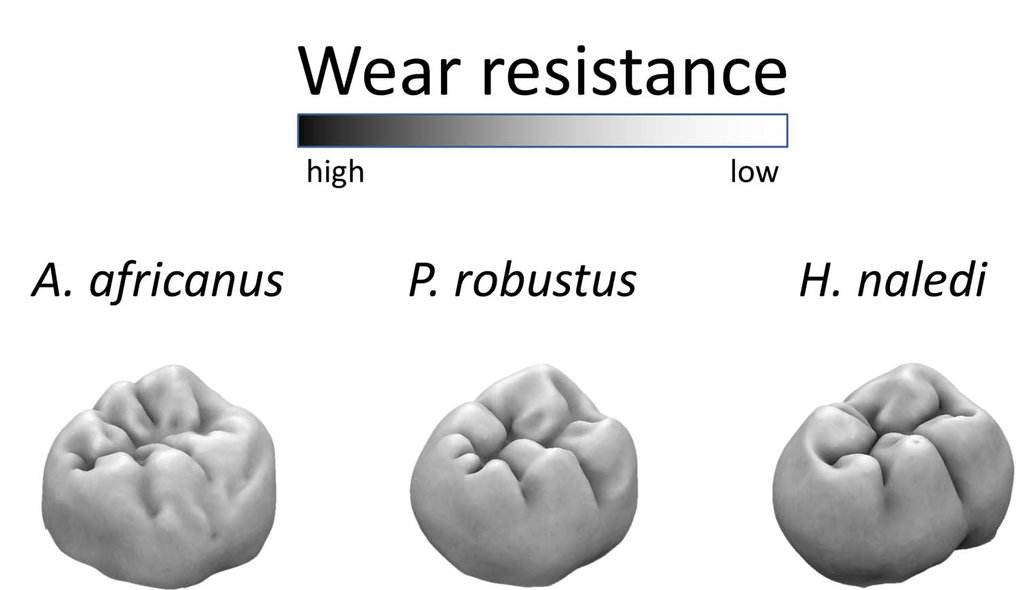 |
| © MPI f. Evolutionary Anthropology |
EUROPA PRESS. Los molares relativamente más altos y resistentes al desgaste de Homo naledi le permitieron tener una dieta mucho más abrasiva que otros homínidos sudafricanos.
Este es el resultado de un estudio reciente realizado por investigadores del Instituto Max Planck de Antropología Evolutiva en Leipzig, la Universidad de Durham en el Reino Unido y la Universidad de Arkansas en los Estados Unidos. Los investigadores concluyen que Homo naledi puede haber comido una dieta mucho más resistente a la masticación que otros homínidos sudafricanos.
Homo Naledi es una especie homínida identificada en 2014, con restos datados entre hace 335.000 y 236.000 años, que indican que pudo coexistir en el tiempo con nuestra especie Homo Sapiens. El hallazgo de restos depositados deliberadamente en una cueva apuntan a una mente inteligente e indicios de cultura. [...] europapress.es
Homo naledi had wear-resistant molars | Max Planck Society
The enigmatic 300,000-year-old South African hominin ate a lot of dust, grit, or phytoliths
Homo naledi’s relatively taller and more wear resistant molars enabled it to have a much more abrasive diet than other South African hominins. This is the result of a recent study by researchers from the Max Planck Institute for Evolutionary Anthropology in Leipzig, the University of Durham in the United Kingdom and the University of Arkansas in the United States. The researchers conclude that Homo naledi may have eaten a much grittier diet than other South African hominins...







No hay comentarios:
Publicar un comentario